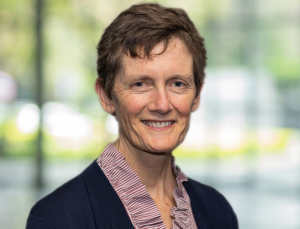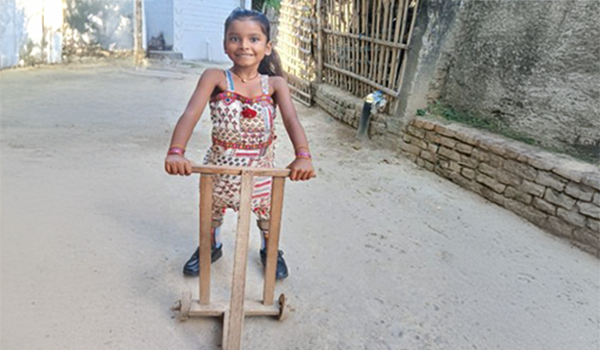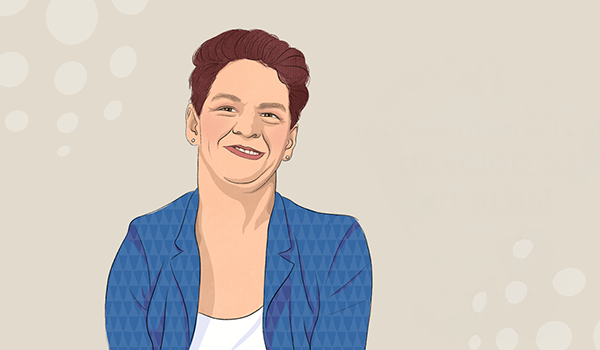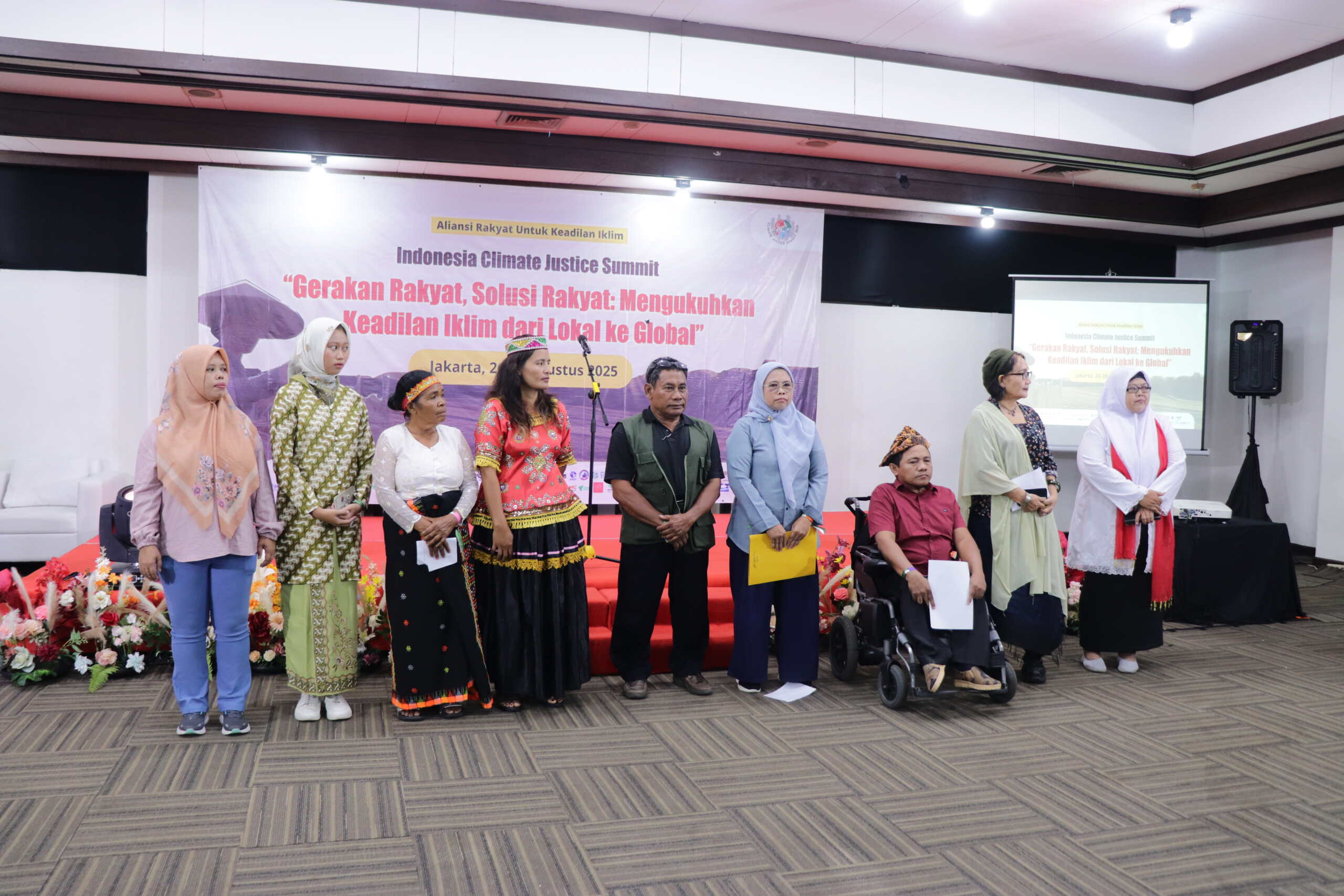Asking “who is missing out?”
Stories | January 20, 2022
As part of spotlight on Quality Principle 2 of ACFID’s Code of Conduct, International Programs Director at CBM Australia, Edwina Faithfull-Farmer, talks with ACFID about participation, empowerment and local ownership, highlighting her experiences from health programs in Indonesia.
Quality Principle 2 focuses on the creation of development and humanitarian responses which enable sustainable change through the empowerment of local actors and systems.
What does Quality Principle 2 of ACFID’s Code of Conduct mean to you?
To me, and CBM Australia, it is simply not enough to say that people with disabilities are welcome to participate or to access what a project has to offer. Because of the barriers they may face (often due to attitudes, physical accessibility or accessibility or communication), people with disabilities often don’t get to take up these opportunities. We need to explicitly work towards participation. Often this means understanding their rights and working together to address barriers to participation.
What are the risks of not properly managing and addressing the principles of participation, empowerment and local ownership?
Programs can ‘miss the mark’ or outcomes be unsustainable if we don’t address these principles. People who are already experiencing barriers to participation and inclusion are likely to continue to experience these barriers. In short, those who are marginalised will not have a say in what happens. By asking the question, ‘who is missing out?’ we have been able to identify groups that may need more specific actions to be able to participate.
How do you work with your partners to increase their awareness and capacity to promote gender equality and equity as well as empowerment of people with disabilities?
How we work with partners towards strengthening promotion of gender equality and equity and disability inclusion depends on the context, but often has firstly a transformational focus and secondly a compliance focus.
From a transformational point of view, we’ve found that awareness is often the first step towards attitude change and to change in development practice. We know that the best way to prompt people to think more about disability is to get someone with disability in the room to talk about how they manage the challenges of disability.
Involving people with disabilities in both the situation analysis and then specific activity planning can help to both raise partners’ awareness and provide an opportunity for genuine participation. When people with disabilities are seen being actively involved, leading and participating, attitudes about their capacities change.
What approaches have you taken to ensure that people with a disabilities or those marginalised by gender have not only had equitable access to the ‘activity’ but also been part of the planning and decision-making process?
CBM’s System for Effective Eye-care (I-SEE) project in Bandung, Indonesia, has worked to improve eye health outcomes for the general population (with some targeted actions at inclusion of people with disabilities as part of this). This has involved working together with the District Health Office, National Eye Hospital and the local Disabled People’s Organisation, Bandung Independent Living Centre (BILiC). Throughout the project, BILiC has worked closely with the District Heath Office to provide training on disability rights advice on disability inclusion for health staff, and share experiences with health services, of people with disabilities in Bandung. It’s been great to learn about how this was received. For example, one health service official who was a training participant explained
“People with disabilities were the trainers. It was amazing for me, I assumed that they can’t do it, but they actually did it, that motivated me. So, people with disabilities who have problems to speak could speak and gave an amazing explanation. It was incredible; hence I am interested to help the I-SEE inclusion Program for the disabled people in hospitals.”
BILiC also conducted accessibility audits of health facilities, and then improvements were made to accessibility at the National Eye Hospital and district hospitals. For example, BILiC were able to share about challenges navigating hospital registration. They suggested how front-line staff could better relate and assist people with disabilities (and members of other marginalised groups) on arrival at a hospital. This also included providing signage accessible to non-readers and those speaking other languages.
As one service user with vision impairment explained:
“When they were going to check my health, they introduced themselves first. They introduced the names of the doctors, securities and others. So, when we meet, we know each other. Since I cannot see, they introduced their names first.”
We’ve found that the changes needed for a building to be physically accessible can sometimes be more obvious than the changes needed for clear communication, making it so important to find out about people’s experiences.
The ACFID Code requires members to monitor and evaluate their progress in promoting gender equality and equity and promoting the empowerment of people with disabilities. What are some ways that CBM Australia is doing this?
We want to know about the success of our strategies towards disability inclusion and gender equality and equity. CBM Australia uses a monitoring tool, recently updated to assist us here. It enables a more participatory approach with partners and potentially stakeholders, where they consider how they are progressing against specific areas. This includes considering gender and disability representation at different reflection points in the life of a project. We hope this is a more meaningful way to monitor progress and foster conversation about how we can strengthen participation, empowerment and local ownership.
We also include gender and disability inclusion as standing topics in all evaluations and aim to include people with disabilities and gender expertise in our evaluation teams.
What are some strategies that have strengthened participation of primary stakeholders in decision making?
A key activity of the I-SEE project has also been training and sharing technical skills with BILiC to strengthen their leadership and improve the confidence of people with disabilities to work with district governments and engage in decision making. We’ve found it’s not fair to expect people with disabilities – who have often missed out on formal education and often lack confidence – to immediately be competent advisors to a health service, without a little support. CBM is also supported with some coaching in organisational and program management. This has strengthened BILiC in becoming a sub-partner, implementing the project during the final year.
Following completion of the project, CBM continued to work towards the development of a local Eye Health Committee. This committee is now established with BILiC part of the committee, having an ongoing role in local planning and decision making.
BILIC are now developing their own community development initiative in Bandung, where they will continue to work for access to and inclusion of people with disabilities in the development of the health system. BILIC’s capacity has also been recognised by the Ministry of Health and they have received further requests to facilitate training. This has included sessions about disability inclusive practices for health staff at Primary Health Centres in several regions of Indonesia, potentially influencing health outcomes across the country.
The Inclusive System for Effective Eye-Care (I-SEE), Bandung project has received funding from the Australian Government through the Australian NGO Cooperation Program (ANCP).

Edwina Faithfull-Farmer is the International Programs Director at CBM Australia, overseeing the international field program. Edwina and her team work with field partners and CBM field offices to help improve rights and opportunities of people with disabilities. Edwina is responsible for the field program strategy and its part in CBM Australia’s strategy.
Edwina joined CBM Australia in 2006 and brings over 25 years’ experience in international program development and management and has worked in both NGO and Government agencies. Edwina has academic qualifications in Natural Resource Management and International Development.
https://www.cbm.org.au/stories/who-is-missing-out
Related Stories

Breaking barriers: Sivani walks to school
Sivani, a six-year-old from a rural municipality in southeastern Nepal, was born with Spina Bifida – a condition that...

Stevie Wills on grief, growth and the power of accessibility
For Stevie Wills – performance poet, writer, disability advocate and CBM Australia associate –...

Case study: Disability Coalition for Climate Justice – Advancing inclusion at Indonesia Climate Justice Summit 2025
In August 2025, the Disability Coalition for Climate Justice...
